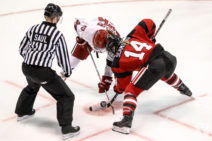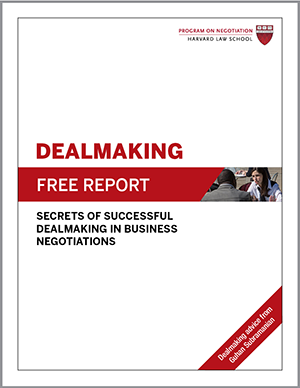
In labor disputes and dealmaking, negotiators on both sides are likely to overestimate the odds that the other side will view their proposals as fair. In fact, however, self-serving perceptions of what constitutes a fair settlement can cause negotiators to remain miles apart. These factors appear to have come into play when the National Hockey League Players’ Association (NHLPA) and the NHL’s team owners attempted to negotiate a new collective-bargaining agreement.
Under the leadership of Commissioner Gary Bettman, the NHL has experienced several labor disruptions that have led to more cancelled games than the other three major U.S. sports leagues combined have experienced, according to Nicholas Cotsonika of Yahoo Sports.
Back in 2004, a labor dispute between the NHL and NHLPA led to the cancellation of the league’s entire season and earned the NHL the dubious distinction of being the only North American professional sports league to lose an entire season to a labor conflict.
At the end of that season, the players accepted what they believed to be onerous contract terms just to get a deal done.
However, the NHL then rebounded and achieved seven years of record revenues, to the benefit of both sides.
In July 2004, two months before the existing agreement’s looming expiration date of September 15, the owners led with an opening offer to the NHLPA. It was an aggressive one: proposing, most notably, a reduction in players’ percentage of hockey related revenue from 57% to 43%.
As justification for their offer, the owners cited recent contracts negotiated by National Football League and National Basketball Association owners, which reduced player revenue sharing to about 50%.
The owners also demanded significant concessions on issues such as player contract lengths, arbitration rights, and free-agency eligibility. The offer was supposed to be a launching point for substantive discussions with the NHLPA. Instead, the offer was so “brutal” that “it became a rallying point for the players, keeping them away” from the bargaining table, according to Cotsonika.
A full month passed before Donald Fehr, the NHLPA’s lead negotiator, delivered a counteroffer—a novel one that separated player salaries from percentage of league revenue. In the first year of the proposed three-year contract, players would get a raise of 2% of $1.88 billion, their share of the previous NHL season’s revenues. The raise would double to 4% the following year and rise again to 6% the year after that.
As a comparison, average player salaries have grown by 7.1% annually since the 2004–2005 NHL lockout.
After three years, the players could choose to revert to the previous agreement. Under the proposal, up to $250 million that would be saved by reducing the players’ cut of NHL revenues would be divided among financially struggling teams.
Fehr framed the proposal as a partnership in which the players and the league’s wealthy clubs would team up to help the league’s struggling clubs. The proposal, he said, was designed to make the NHL owners and management responsible for the league’s growth.
Some media observers viewed the proposal as innovative and collaborative, but the owners didn’t see it that way.
They accused the players of sidestepping their demand for deep cuts to player salaries; the two sides remained a whopping $435 million apart on the issue.
The owners also disputed the NHLPA’s projections of the league’s growth.
By the time the September 15 deadline arrived, the owners had inched their offer up to 47% of revenue sharing for the players for the third year of their contract; the NHLPA wouldn’t budge below 52%.
Negotiations continued, as the two sides tried to hammer out what constitutes hockey-related revenue—the pool of money they must then decide how to divide. But trust was in short supply.
Players demonized Bettman in the media, and many appear to still be bitter about the league’s lowball opening offer. Both sides believe they offered sufficient concessions.
Dealmaking and Getting Negotiators to the Table
This impasse offers a stark illustration of the risks inherent in making an aggressive opening offer.
In negotiation, the party that makes the first offer often controls the discussion and comes out ahead.
For that reason, Northwestern University professor Adam D. Galinsky advises making an offer that is aggressive, but not absurdly so. Moreover, be prepared to back it up with a compelling argument.
Given its history of contention and mistrust with the NHLPA, the NHL should have anticipated that the players would consider a 14% drop in salary to be insulting, even absurd, especially when it was unaccompanied by a compelling argument.
“All the other kids are doing it”—meaning other sports leagues— wasn’t an adequate justification for a player pay cut, writes Bruce Arthur of Canada’s National Post.
The players, for their part, made a bad situation worse by trying to sever the connection between their salaries and league revenues. It was a condition the owners were unlikely to accept, as revenue sharing had created joint responsibility for the league’s success.
Only by taking a step back and thinking carefully about what they and their sport might lose from another canceled season can the two sides gain a realistic sense of what they can reasonably expect from the other side—and how they might get there.
Adapted from “Negotiators: How You Can Avoid Striking Out,” first published in the December 2012 issue of Negotiation.





